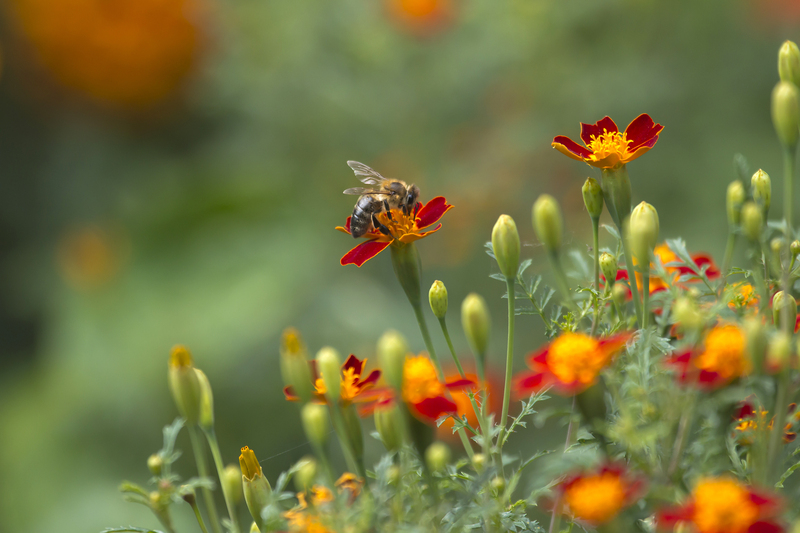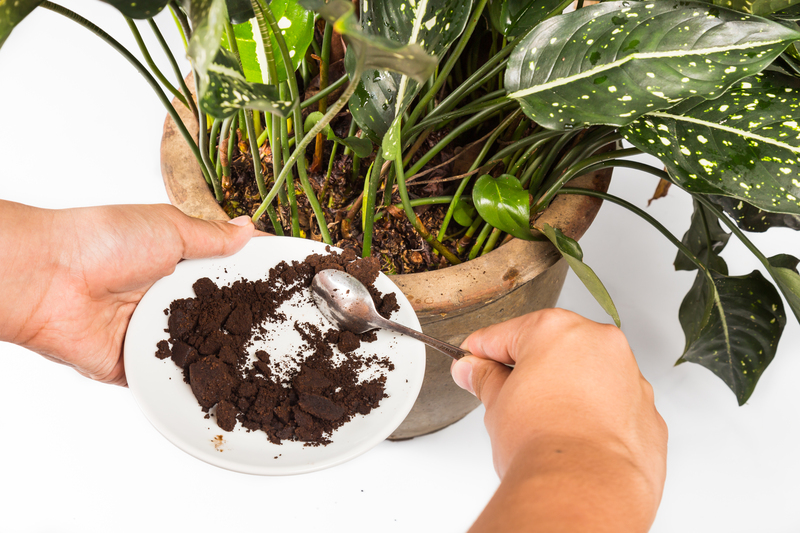Container Gardening: The Art of Growing Plants Anywhere
Posted on 19/06/2025
Container Gardening: The Art of Growing Plants Anywhere
Container gardening has emerged as a creative, accessible, and sustainable gardening solution for modern urban dwellers and home gardeners alike. With its adaptability, ease of maintenance, and endless possibilities, growing plants in containers is truly an art form that allows anyone to nurture their green thumb, regardless of space limitations. In this comprehensive guide, you'll discover how to create a lush, thriving oasis wherever you reside--from balconies and patios to window sills and rooftops.
What Is Container Gardening?
Container gardening, also known as pot gardening or pot planting, is the practice of cultivating plants in containers instead of directly in the ground. These containers can range from traditional terracotta pots and planters to repurposed buckets and baskets, allowing for ultimate creativity and personalization. Container gardens can include vegetables, herbs, ornamental flowers, shrubs, and even small trees.
Why Choose Container Gardening?
- Space-saving flexibility--Perfect for small urban spaces, patios, balconies, or areas with poor soil.
- Mobility--Easily move plants, optimize sunlight, and adapt to changing environments.
- Soil control--Customize soil type and composition for different plant needs.
- Pest and disease reduction--Fewer soil-borne issues compared to traditional gardens.
- Creative freedom--Mix and match plant varieties, colors, and textures to design stunning displays.
Whether you're a seasoned gardener or just starting, container gardening opens up a world of possibility to grow lush plants and bountiful edibles anywhere.

Choosing the Best Containers for Your Garden
The heart of every container garden is, of course, the container itself. With a myriad of options available, making the right choice can elevate your gardening success and aesthetic.
Common Container Types
- Terracotta and Clay Pots: Pourous, classic look, good drainage but may dry out faster.
- Plastic Planters: Lightweight, retain moisture, available in various designs and colors.
- Ceramic Pots: Durable, decorative, but heavier and may require extra drainage holes.
- Wooden Boxes/Barrels: Rustic charm, insulate roots, but need treatment to prevent rot.
- Metal Containers: Modern aesthetic, durable, can heat up in summer and cool down quickly in winter.
- Fabric Grow Bags: Promote healthy root growth, lightweight, and easy to move.
- Recycled Materials: Buckets, baskets, old sinks, even shoes--let your imagination run wild!
Important Features to Look For:
- Drainage Holes--Essential for preventing root rot and overwatering.
- Size--Ensure enough space for root expansion; small pots dry out faster.
- Material Suitability--Match to your climate and aesthetic preference.
Best Plants for Container Gardens
The possibilities with container gardening are endless. Here are some top picks for growing plants in containers:
Edible Plants
- Herbs: Basil, mint, parsley, chives, cilantro, rosemary, and thyme thrive in pots and provide fresh flavors year-round.
- Vegetables: Tomatoes, peppers, lettuce, spinach, radishes, carrots, and dwarf cucumber varieties do well in containers.
- Fruits: Strawberries, blueberries, dwarf citrus trees, and figs can be grown in larger planters.
Ornamental Flowers & Foliage
- Annuals: Petunias, marigolds, geraniums, and impatiens provide bursts of seasonal color.
- Perennials: Lavender, hosta, daylilies, and ornamental grasses offer lasting beauty year after year.
- Vines & Trailers: Ivy, sweet potato vine, nasturtiums, and morning glories add elegance and vertical interest.
Small Shrubs and Trees
- Dwarf conifers, Japanese maple, or Boxwood are excellent choices for statement containers and longer-term growth.
Tip: When planning a container arrangement, combine plants with similar sunlight, water, and soil requirements for optimal results.
How to Start a Container Garden: Step-by-Step Guide
Starting your own container garden is simpler than you might think. Here's a comprehensive guide to get you started on your container gardening journey:
1. Decide Where Your Garden Will Grow
Consider light exposure (full sun, partial shade, or shade), wind conditions, and convenience for watering and harvesting. Balconies, rooftops, windowsills, and patios are all excellent options for container plant growth.
2. Choose the Right Containers
Match the container size to your plant's mature size. Ensure all containers have adequate drainage holes and suit your climate and lifestyle.
3. Pick the Right Soil Mix
Container gardening requires high-quality, well-draining potting mix. Never use garden soil alone, as it can compact, leading to poor drainage and nutrient issues. Look for blends containing peat moss, compost, perlite, or vermiculite for moisture retention and aeration.
4. Select the Best Plants for Your Space
Choose according to the site's sunlight, your design vision, and plant compatibility.
5. Planting Your Containers
- Fill containers with potting mix, leaving 1-2 inches at the top.
- Arrange plants while still in their nursery pots to finalize your design.
- Remove plants carefully, tease roots if needed, and plant at the same depth.
- Water thoroughly after planting to settle soil around roots.
6. Watering and Fertilizing
Plants in pots dry out faster than those in the ground. Check moisture levels daily, especially in hot weather. Fertilize regularly based on plant needs, using slow-release or liquid feed. Always follow package instructions to avoid overfeeding.
7. Ongoing Care and Maintenance
- Deadhead flowers regularly to encourage more blooms.
- Rotate containers for even growth if sunlight is one-sided.
- Periodically check for pests and diseases.
- Prune as needed to maintain plant shape and size.
Creative Ideas for Container Gardening
Vertical Gardens
- Use wall-mounted pots, hanging baskets, or tiered plant stands to maximize vertical space.
- Great for climbing plants, succulents, herbs, and trailing flowers.
Upcycled and Eco-Friendly Containers
- Old boots, teapots, coffee cans, and wooden crates make unique planters.
- Turn discarded pallets into multi-level planter boxes.
Themed Container Gardens
- Herb Kitchen Garden: Fill a large planter with your favorite culinary herbs for instant access in the kitchen.
- Pollinator Paradise: Attract bees and butterflies with a combination of nectar-rich flowers.
- Color-Coordinated Designs: Use pots and flowers in matching or contrasting hues for stunning visual effects.
Common Container Gardening Problems (And How to Solve Them)
Overwatering & Root Rot
- Ensure every container has effective drainage.
- Allow soil surface to dry slightly before watering again.
Signs of overwatering include yellowing leaves, wilting, and mushy roots.
Pests & Diseases
- Check plants weekly for aphids, mites, or powdery mildew.
- Remove dead leaves and debris promptly.
- Use organic sprays or introduce beneficial insects as needed.
Nutrient Deficiencies
- Pale leaves may indicate a lack of nitrogen.
- Stunted growth can be remedied with a balanced, water-soluble fertilizer.
Container Gardening by the Seasons
Each season offers new opportunities for your container garden:
Spring
- Plant cool-weather vegetables, early herbs, and bulbs for early color.
Summer
- Showcase sun-loving annuals, tropical plants, and fruiting vegetables.
Fall
- Add mums, ornamental cabbage, and late-blooming perennials for autumn interest.
Winter
- Use evergreen shrubs, holiday berries, and hardy grasses for winter displays.
Tip: Move sensitive plants indoors during frost or extreme temperatures.
Expert Tips for Successful Container Gardening
- Right plant, right place: Choose varieties suited to your site's lighting and climate.
- Mulch pots: Help retain moisture and suppress weeds in larger containers.
- Group containers: Clustered pots create a microclimate, helping retain humidity and temperature.
- Don't overcrowd: Leave room for air circulation and future growth.
- Rotate and elevate: Place pots on risers or wheels for easy rotation and cleaning underneath.
The Sustainable Benefits of Container Gardening
- Reduces food miles by allowing you to grow herbs, fruits, and veggies at home.
- Minimizes waste when using upcycled containers and compostable soil mixes.
- Maximizes biodiversity in small spaces, inviting pollinators and beneficial insects.
- Promotes well-being through hands-on interaction with nature, even in the heart of the city.

Frequently Asked Questions about Container Gardening
Q: How often should containers be watered?
A: It depends on the plant type, pot size, and climate. Generally, check soil daily--most pots need water when the top inch is dry. In hot weather, daily watering is often required.
Q: Can I use regular garden soil in pots?
A: No, it's best to use a quality potting mix. Garden soil may compact, leading to drainage issues and root disease in containers.
Q: What vegetables are easiest to grow in containers?
A: Lettuce, spinach, radishes, bush beans, peppers, and tomatoes are all excellent choices for beginners in container gardening.
Q: Are self-watering containers worth it?
A: Yes! They make container plant care easier by providing a reservoir of water and reducing the frequency of manual watering.
Transform Any Space with the Joy of Container Gardening
With a little creativity and thoughtful planning, container gardening can truly allow you to grow plants anywhere. Whether you're aiming for bountiful vegetables, fragrant herbs, vibrant blooms, or stunning foliage, the versatility of container gardens ensures success in any environment.
Ready to start your own urban oasis? Experiment with different containers, mix your favorite plants, and enjoy the many benefits--fresh flavors, visual beauty, and a closer connection to nature. Happy planting, and may your container gardening journey flourish wherever you choose to let your green thumb work its magic!

